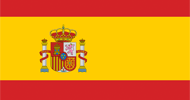
The USB-C GoPro 3.5mm Mic Adapter allows powered and unpowered microphones to be connected to a HERO5 or newer GoPro via its USB-C port. While the older style Mini USB adapter was simply a passive adapter, the USB-C dongle is considerably more complex -- and expensive. We decided to open one up and find out what's in there.
Index
- Teardown
- Why is the GoPro USB-C mic adapter so expensive?
- Why is the GoPro USB-C mic adapter so big?
- Why does it have it's own ADC chip?
- Is there an alternative to the GoPro USB-C Mic Adapter?
- Why can't I use third party USB-C devices with a GoPro?
- Can it charge and record at the same time?
- Is the GoPro USB-C mic adapter waterproof?

Teardown
The mic adapter consists of two printed circuit boards encased in a layer of resin potting material (for waterproofing), and jacketed in an outer layer of PVC. One PCB is a small breakout board containing only the 3.5mm receptacle and a capacitor. The other board houses:
- 1 PI3USB9281 USB Port Protection and Charge Detector
- 1 LTC4412 Low Loss Power Controller
- 1 Conexant CX20812-11Z High Performance ADC
- 10 unidentified integrated circuits
- 43 capacitors
- 18 resistors
- 3 diodes
- 3 transistors
- 1 USB Type-C receptacle
Why is the GoPro USB-C mic adapter so expensive?
The previous version of this adapter was a passive Mini USB to 3.5mm adapter that was inexpensive and widely available from third parties. The USB-C adapter is considerably more expensive, and no third party versions are available at the moment. Essentially its cost comes down to two factors: It's a reasonably well-specced ADC, and it's sort of waterproof.Analog to Digital and Digital to Analog converters span an enormous range of quality and pricing. While a USB model intended to plug into a computer may only cost a few dollars, it's not unheard of for professional models to run into the hundreds or thousands. The hardware on this particular model appears to be midrange, and somewhat specialized.

While it won't actually work underwater (because it requires the GoPro to run with its door open), this adapter has clearly been ruggedized. The entire PCB is potted in resin, and the exterior is a single molded piece of plastic. Even if you can't use it underwater, it would likely survive exposure to the elements. This takes some extra engineering during development, and likely adds to the manufacturing cost as well.

Why is the GoPro USB-C mic adapter so big?
As you can see from the photos, there isn't a lot of wasted space inside this adapter. It's definitely larger than the older style Mini USB adapter, but that was just a passive format converter. It's large because it has a lot of stuff inside.Why does it have its own ADC chip?
A USB-C jack can be used as an audio input or output in one of two ways. Its accessory pins can be repurposed to carry analog audio, or it can be used as a digital connection to an external analog to digital converter. The GoPro USB-C adapter is the latter, containing not just an ADC, but the same ADC as the HERO5 itself.This design offers a couple of advantages. First, the GoPro itself is electrically isolated from the microphone and power inputs by a power management circuit. Second, while the GoPro's onboard ADC could handle audio encoding, it may have required the addition of other components that would take up space and increase manufacturing cost.
Is there an alternative to the GoPro USB-C Mic Adapter?
Not really. Starting with the HERO5, the camera performs an authenticity check on any USB-C accessories attached to determine if they're "authorized" to communicate with the device. While non-GoPro USB-C to 3.5mm adapters exist, they won't be recognized as an authorized accessory by the GoPro.This leaves two options: GoPro's USB-C Microphone adapter, and the GoPro HERO9 "Media Mod," which adds a 3.5mm microphone input, USB-C power input, and HDMI output port.
Why can't I use third party USB-C mic adapters with a GoPro?
GoPro cameras perform an authenticity check on any USB-C device plugged in, to determine if it is an authorized accessory. At present there are no authorized third party GoPro mic adapters or USB-C audio accessories, so the camera will simply fail to acknowledge the device.Can it charge and record at the same time?
Yes. GoPro advertises charging as a function of the adapter, but still generally recommends not operating the camera while it's charging.We tested this with a HERO5 and an unpowered Sony ECM-CS3 microphone, and found that it worked (best with the MIC+ 20dB boost turned on) but resulted in some intermittent audio cutouts.
Is the GoPro USB-C mic adapter waterproof?
Short answer: Not really.Long answer: It's not possible to use the GoPro mic adapter underwater, because it requires the GoPro to run with its accessory port open, compromising the waterproofing of the whole system. However the adapter itself appears to be fairly rugged. The entire PCB is potted in resin, which is a common method of waterproofing, and the exterior is a single molded piece of plastic. Although it may not be functionally waterproof, it seems designed to survive some exposure to the elements between uses.
Looking for more information?
We hope this guide will help answer your questions about the GoPro USB-C Mic Adapter.
Check out some of our other popular tech guides:
We hope this guide will help answer your questions about the GoPro USB-C Mic Adapter.
Check out some of our other popular tech guides:









